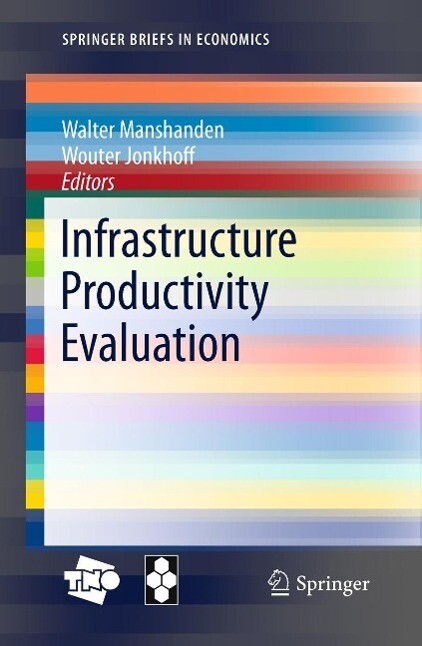
Infrastructure construction and use is at the heart o the current political debate. Not only are European member state governments investing large amounts of money to alleviate the harmful effects of the economic downturn due to the credit crisis, EU accession countries receive large amounts of cohesion funds for infrastructure purposes. Infrastructure is widely believed to contribute largely to economic performance, but to what extent is this the case? How does the productivity of roads, railways and ports relate to the invested money, and what determines their effectiveness?
In this Brief, which focuses to a large extent on Dutch and European practice, numerous distinguished economists describe policy practice and analytical tools for infrastructure appraisal. Moreover, harmonisation of European approaches for evaluation of infrastructure are discussed. The study focuses both on scientific productivity measurement as on case studies of infrastructure policy.
Inhaltsverzeichnis
1;5.2.1 The Production Function;75 1.7.2.2;5.2.2 Data;76 1.7.2.3;5.2.3 Stylized Facts;77 1.7.3;5.3 Results;79 1.7.3.1;5.3.1 Growth Accounting;79 1.7.3.2;5.3.2 Regression Analysis;81 1.7.4;5.4 Conclusion and Discussion;84 1.7.5;References;86 1.8;Chapter 6: Indirect Effects in European Transport Project Appraisal*;87 1.8.1;6.1 Introduction;87 1.8.2;6.2 Types of Effects;88 1.8.3;6.3 The Case for Harmonisation;91 1.8.4;6.4 Current Practice;92 1.8.4.1;6.4.1 Models;92 1.8.4.1.1;6.4.1.1 The SASI Model;93 1.8.4.1.2;6.4.1.2 The CGEurope Model;95 1.8.4.2;6.4.2 Current Practice in Five Countries;95 1.8.4.2.1;6.4.2.1 The Netherlands;95 1.8.4.2.2;6.4.2.2 The UK;96 1.8.4.2.3;6.4.2.3 Germany;96 1.8.4.2.4;6.4.2.4 Japan;96 1.8.4.2.5;6.4.2.5 The USA;97 1.8.4.3;6.4.3 Survey;97 1.8.4.3.1;6.4.3.1 Is Double Counting Avoided, and How?;98 1.8.4.3.2;6.4.3.2 General Coverage and Assessment Methods;98 1.8.4.3.3;6.4.3.3 Types of Indirect Effects Covered;99 1.8.4.3.4;6.4.3.4 Overview of Types of Effects Covered in CBA;100 1.8.5;6.5 Conclusion;101 1.8.6;References;101 1.9;About the Authors;103
Produktdetails
Entdecken Sie mehr
Bewertungen
Es wurden noch keine Bewertungen abgegeben. Schreiben Sie die erste Bewertung zu "Infrastructure Productivity Evaluation" und helfen Sie damit anderen bei der Kaufentscheidung.










